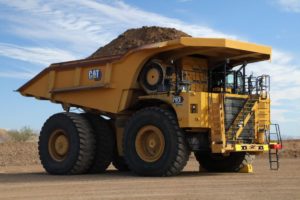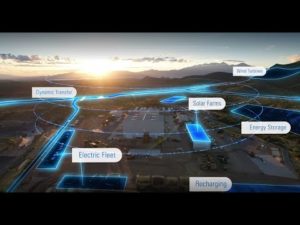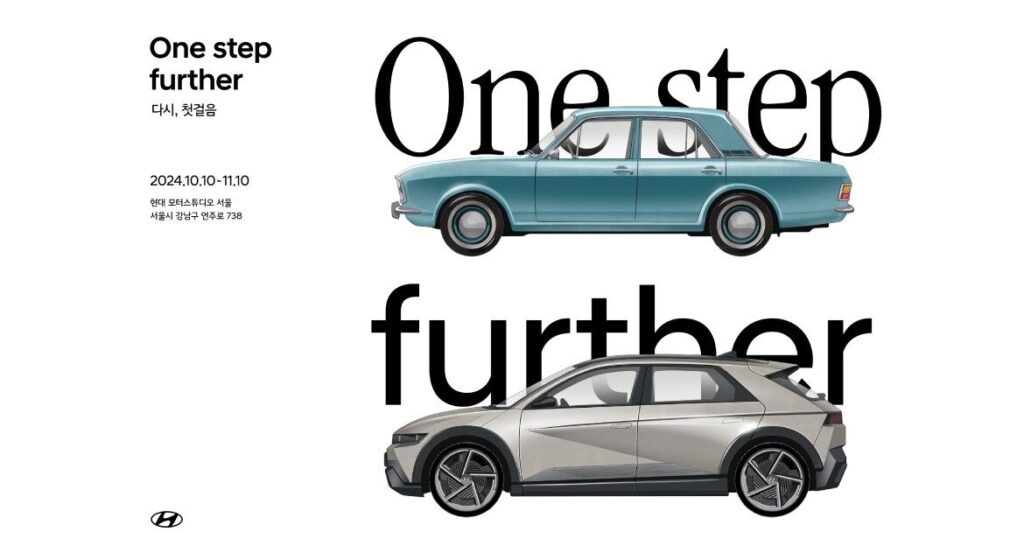All four of the world’s leading large mining truck OEMs, namely Caterpillar, Komatsu, Liebherr and Hitachi, attended The Electric Mine 2023 conference in force in May and all gave presentations on their technologies and outlook relating to mining’s energy transition.
Caterpillar’s Group President of Resource Industries Denise Johnson opened the conference with a really upbeat keynote showing how far Caterpillar has already come with its Early Learner program but also outlining its ambitious targets going forward. Titled ‘Together – we are mining more sustainably,’ her opening comments highlighted that the industry is very much in an era of collaboration and partnership. “We are still competitors in many ways…but there’s going to need to be, now more than ever, at the interfaces and certainly as we think about how the ecosystem moves forward – there’s going to have to be more and more collaboration.”
The unveiling of the battery electric 793 prototype was a big moment for Caterpillar

She emphasised Caterpillar has no intention of stopping producing all the equipment it produces today – for those customers that are not yet ready for the energy transition – it will continue to build diesel equipment for the foreseeable future. “We recognise the complexity of this transition – it’s going to take years and not everyone is going to be ready, so we want to be in both camps, supporting existing customers with traditional methods but then also maybe providing solutions that get us halfway or three quarters of the way there; and then of course the full solution.”
Power generation and autonomy will play a critical role in site energy management for those mines deploying electric trucks. “It becomes a lot more complex – without a doubt a lot more electrical energy will be required to power the site. In some cases, our simulations indicate two to three times the amount of electricity…the truck charging is going to be required on a 24/7 basis and because it’s going to be spread across the minesite, you have a lot more power required, and that power needs to be distributed in a way that it isn’t today. We do see when you look at battery electric a combination of dynamic charging and static charging. If you just rely on one or the other you’re going to need a lot more trucks and a lot more idle time at various queues.”
Caterpillar is adding additional solar, wind and energy storage capabilities at its Tucson Proving Ground

On automation Johnson added that to optimise an electric mine’s output and safety in addition to the fact that you will have to maintain a state of charge for each one of the trucks – when does it need to be charged down to the minute, when does it need to go to the charger, etc. So overall the new mine ecosystem will take a lot more power, plus automation – to be able to anticipate what will happen next. A combination of all of these will allow the mine to operate differently than it does today. In the electric minesite, everything is more interdependent, so it needs to operate as an integrated and well-orchestrated ecosystem. This cohesive electric mine system will also be customised to meet each customer’s needs.
Back to the trucks themselves and Caterpillar’s transformational product development. Johnson emphasised the challenge to get there in a relatively short space of time. As an example, when you talk about the number of new parts – in a standard new production introduction for Caterpillar – what it calls an NPI – this typically would involve new content of less than 20%. For the electric trucks it’s significantly more new content along with a lot of new software and interfaces. Agile engineering has been a big part of this – getting prototypes to the customers faster and getting them into their sites sooner to allow for all the learning and iterating to advance as quickly as possible. These iterative loops have already begun with the prototype which will progress through the Early Learner models which are the units that will be deployed to customer sites, then pilot units and finally production units.
The prototype truck has already been successfully demoed, including in November 2022 with a range of partner customers present. Over a 7 km (4.3 mile) course, Caterpillar monitored over 1,100 data channels, gathering 110,000 data points per second, to validate simulation and engineering modelling capabilities. Fully loaded to its rated capacity, the truck, a battery electric version of the 793, achieved a top speed of 60 km/h (37.3 mph). The loaded truck travelled one kilometre (0.62 mile) up a 10% grade at 12 km/h (7.5 mph). The truck also performed a one kilometre (0.62 mile) run on a 10% downhill grade, regenerating that energy to the battery and capturing the energy that normally would have been lost to heat.
The Early Learner truck designs, Johnson said are also already complete – and these will start to be built in 2024 for transport to partner sites. These units are intended to refine requirements and complete the process development as well as beginning the process of in-depth validation. The Early Learner partners, which include Teck, BHP, Newmont, Rio Tinto and Freeport McMoRan, also offer a wide range of different commodity and application exposures including high altitude, plus cold and hot climates.
At these Early Learner sites, additional trucks will be added as part of the pilot phase. This will demonstrate integration – how these trucks will work together, including from an automation perspective, and how they can work alongside non-battery trucks. The focus will also be on fleet optimisation and infrastructure learnings. Caterpillar engineers and dealers will be on customer sites from the get-go beginning with the Early Learner phase. For the planned production starting in 2027, Johnson was clear that certain KPIs have to be hit for that to happen.
Finally, Caterpillar is also creating what it calls its own minesite of the future at its Tucson Proving Ground. It will have the ability to demo the electric technology in a way not possible before as TPG isn’t connected to the local utility grid and previously relied on six gensets. This is changing to meet the increasing energy demands of electric truck development and testing. Caterpillar is adding additional solar, wind and energy storage capabilities to provide a buffer between the site’s energy supply and demand. Infrastructure to support stationary and dynamic charging will also be added and everything will be managed using a digital system to orchestrate the site energy ecosystem in real time. This all helps Caterpillar better understand how customers will use renewable energy sources, and the impact this will have on people, processes, technology and infrastructure.


